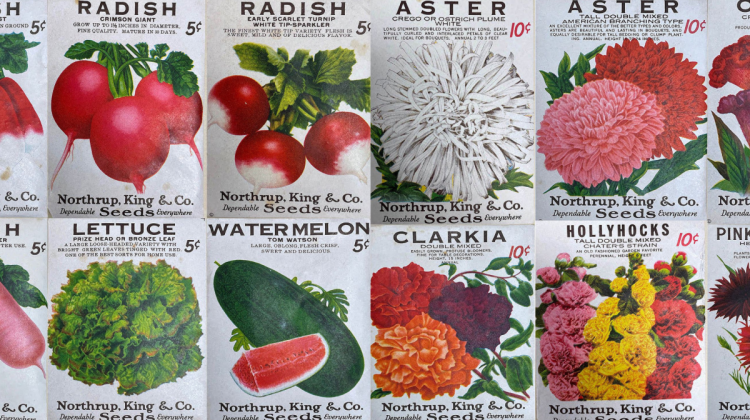- عربي
- 中文
- English
- Français
- Русский
- Español

For the signing of the UN Charter on 26 June 1945, someone sent packets of flower and vegetable seeds as a contribution to hope for a better future. They have been kept in the Archives since then.
In April 1945, delegates representing 46 countries assembled in San Francisco to form the United Nations. The conference ended with the signing of the Charter of the United Nations on 26 June.
During the two months of planning and deliberations, its progress was eagerly followed by the entire world. Members of the public, wanting to contribute more directly, sent in suggestions by mail.
Some offered anthems, others submitted flag designs, still others proposed peace plans and the way to end all tyranny.
In one unusual case, someone sent packets of flower and vegetable seeds.
Unfortunately, no information could be found regarding the sender of the seeds, or what their intentions were behind it. They may have wanted the new Organization to plant the seeds in its new headquarters, once the site was chosen, to represent new beginnings and hope for the future.
The seeds, together with the newly drafted UN Charter and all the other documents and correspondence created in San Francisco, were put in their own boxcar of a train and sent across the entire United States to New York City, where they were put aboard a ship, Queen Elizabeth, for the cross-Atlantic journey to London.
There, the Preparatory Commission used the records to complete the creation of the United Nations until the appointment of the first Secretary-General, Trygve Lie.
Following the first meetings of the General Assembly and the Security Council, the rapidly growing set of documents made the reverse trans-Atlantic trip to New York City, where they have been held by the United Nations Archives ever since.
Strictly speaking, the seeds should never really have been kept, as they fall outside of the scope of what the United Nations Archives collects, and because organic materials should not be stored with paper records, so we will now be removing them.
We don’t know how viable they will be after all these years and two trips across the Atlantic Ocean, but we are eager to find out.
The United Nations Archives is exploring various options for planting the seeds.
We look forward to seeing if the seeds will sprout 78 years after they were sent. Stay tuned!
______________________________
Originally published in UN Intranet (iSeek)
26 June 2023

